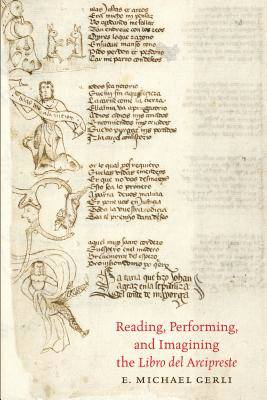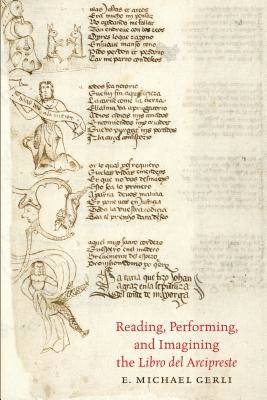
Je cadeautjes zeker op tijd in huis hebben voor de feestdagen? Kom langs in onze winkels en vind het perfecte geschenk!
- Afhalen na 1 uur in een winkel met voorraad
- Gratis thuislevering in België vanaf € 30
- Ruim aanbod met 7 miljoen producten
Je cadeautjes zeker op tijd in huis hebben voor de feestdagen? Kom langs in onze winkels en vind het perfecte geschenk!
- Afhalen na 1 uur in een winkel met voorraad
- Gratis thuislevering in België vanaf € 30
- Ruim aanbod met 7 miljoen producten
Zoeken
Omschrijving
Reading, Performing, and Imagining the Libro del Arcipreste examines how reading, writing, and interpretation reside at the core of the cultural history of the Castilian Libro del Arcipreste (often called the Libro de buen amor) from the moment of its creation in the first part of the fourteenth century. The study comprises three sections. In the first, the author situates the Libro within the tradition of Augustinian hermeneutics and exegetics, relating the work to the schools at Toledo and Salamanca. The detailed argument makes notable connections between contemporary reception theory and medieval reading and scholarly practices. The second part develops hypotheses concerning the performative cues in the Libro, emphasizing the audible/visible aspect of medieval reading and performance. Here Gerli focuses on the orthodoxy of the Libro, revealing how by presenting heretical content in accordance with Augustinian/ethical reading strategies, the work advances the novel and convincing hypothesis that the Libro provides its audience an opportunity to recognize heterodoxy rather than espouse it. The final section deals with the rewriting and reimagining of the Libro on into modernity. Significantly, Gerli demonstrates the manner in which the work served as a poetic manifesto for fifteenth-century cancionero poets, especially in relation to the Cancioneros de Baena, Estúñiga, and Palacio, and how it formed part of the horizon of expectations of courtly audiences. The last chapter of this section presents a troubling case study of the modern American reception of the book and the figure of its putative author, Juan Ruiz, as it tells a gripping tale about a Libro scholar and translator of the work, Elisha Kent Kane. But it is not just a great story -- it is a profound one -- that constitutes another ethical parable of interpretation generated by the Libro itself and raises two abiding questions: Was the great scholar in question an innocent and mischievous wit -- a carefree bon vivant -- or was he a philandering, callous murderer?
Specificaties
Betrokkenen
- Auteur(s):
- Uitgeverij:
Inhoud
- Aantal bladzijden:
- 284
- Taal:
- Engels
- Reeks:
- Reeksnummer:
- nr. 307
Eigenschappen
- Productcode (EAN):
- 9781469630618
- Verschijningsdatum:
- 25/11/2016
- Uitvoering:
- Paperback
- Formaat:
- Trade paperback (VS)
- Afmetingen:
- 150 mm x 231 mm
- Gewicht:
- 498 g

Alleen bij Standaard Boekhandel
+ 183 punten op je klantenkaart van Standaard Boekhandel
Beoordelingen
We publiceren alleen reviews die voldoen aan de voorwaarden voor reviews. Bekijk onze voorwaarden voor reviews.









